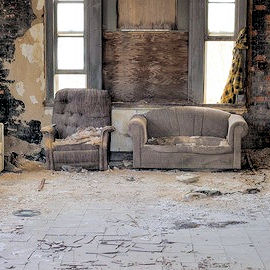Work Practice Controls
Work practice controls do not reduce or eliminate the hazard. Rather, they attempt to control behaviors using safe procedures and work practices. Work practice controls include:
- procedures for removing, handling, and storing asbestos containing materials
Are There Different Types of Asbestos Work?
- mandatory safety practices and rules to ensure employees are not exposed to airborne asbestos
Work Classifications
All Class I, II and III asbestos work should be conducted within regulated areas. Perform all other operations within a regulated area if airborne concentrations of asbestos exceed, or there is a reasonable possibility they may exceed a PEL.
Class I work is the most hazardous class of asbestos jobs because it releases asbestos fibers into the air. This work involves the removal, encapsulation, or enclosure of asbestos-containing material (ACM) or presumed asbestos-containing material (PACM).
Class 1 work usually involves removal of thermal insulation. Thermal insulation includes asbestos-containing materials applied to pipes, boilers, tanks, ducts, or other structural components to prevent heat loss or gain. Surfacing materials may include decorative plaster on ceilings, acoustical materials on decking, or fireproofing on structural members.
Employees performing work in a Class 1 regulated area should wear suits and respirators. A decontamination area should be at the containment site. Consider all waste materials as hazardous asbestos waste and carefully dispose of it.

Class II asbestos work includes the removal of ACMs other than thermal insulation, such as flooring and roofing materials. Removing intact incidental roofing materials such as cements, mastics, coatings, and flashings is not regulated as Class II. Examples of Class II work include removal of floor or ceiling tiles, siding, roofing, or transite panels.
When a designated competent person deems roofing material being removed as intact, the roofing contractor may make a negative exposure assessment and avoid initial monitoring if it meets the following conditions:
- Employees have been trained.
- The work practices described in the rule are strictly followed.
Knowledge Check Choose the best answer for the question.
3-4. Working in which of the following work classes is the most hazardous because asbestos fibers will be released into the air?
You forgot to answer the question!
